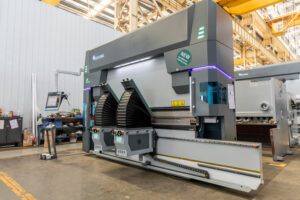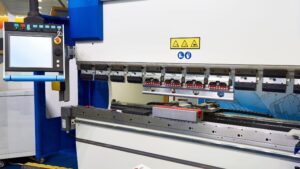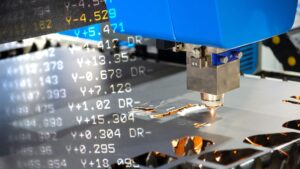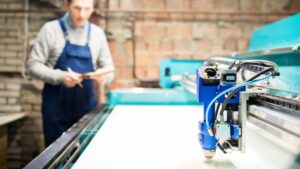Laser tube cutting, a remarkable technology that’s transformed the realm of metal fabrication, is at the heart of many advancements in various industries. But what makes it such a game-changer? In this comprehensive guide, we’ll dive deep into everything you need to know about laser tube cutting, from its intricate workings to the industries it has revolutionized.
Can tubes be laser cut?
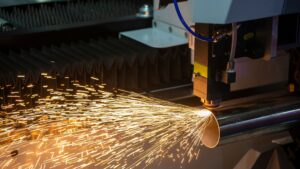
Absolutely. Laser cutting has proven to be an effective method for cutting tubes, offering a level of precision and efficiency that other methods struggle to match. Laser tube cutting machines harness the power of lasers to cut through various materials, making them a top choice for many industries.
How does laser tube cutting work?
Laser tube cutting involves directing a high-powered laser at the material intended to be cut. The energy from the laser beam melts or vaporizes the material, resulting in a clean and precise cut.
Main stages of tube laser cutting:
- Material Preparation: The tube material is properly aligned and set in position to ensure accurate cutting.
- Laser Calibration: The laser cutter adjusts its settings based on the material’s properties and the desired outcome.
- Cutting Process: The laser beam moves across the material, following the designated pattern or design.
- Cooling and Solidification: The cut sections cool down and solidify, ensuring a sharp finish.
- Post-cut Processing: Any residues are cleaned off, and further finishing processes are applied if necessary.
What are the different types of laser tube cutting machines?
There are primarily two dominant types of laser cutters used in laser tube cutting: Fiber laser cutters and CO2 fiber laser cutters.
Fiber laser cutters
Fiber laser cutting has taken the forefront in modern metal fabrication processes, primarily due to their remarkable efficiency and precision. These laser tube cutting machines rely on diode banks, which are compact modules, to generate the laser. The very nature of these diodes and their construction allows the laser to be produced in a more streamlined and energy-conserving manner.
Unlike traditional CO2 lasers, fiber lasers boast a higher wall plug efficiency, essentially meaning that they can achieve more with less energy consumed. This not only benefits the environment but also reduces operational costs for industries utilizing these machines.
Beyond the energy efficiency, one of the standout features of fiber lasers is their small beam diameter. This minuscule beam diameter is pivotal in ensuring precise cuts, giving users the ability to achieve intricate designs and patterns with unmatched accuracy. This precision is essential for industries where even a minor mistake can translate into substantial financial losses.
- Pros:
- Greater efficiency with >40% wall plug efficiency.
- Capable of laser tube cutting reflective materials due to smaller wavelength.
- Less maintenance, no mirror cleaning required.
- Modules offer redundancy; minor issues won’t shut down the entire resonator.
- Cons:
- Requires clean chiller water and routine air filter replacements.
CO2 fiber laser cutters
CO2 laser cutters, while they might seem overshadowed by the advancements of fiber lasers, still hold a significant position in many industries due to their robustness and versatility. These machines harness a combination of gases and electricity to generate the laser beam.
The creation of the laser in CO2 machines is a more intricate process. As electricity is introduced to a mix of gases, it produces the laser beam, which is then intensified with the help of mirrors.
While they have served many fabrication needs over the years, CO2 lasers inherently require more energy, given the complex process involved in beam generation.
- Pros:
- Can handle a variety of materials effectively.
- Proven technology with a track record in the industry.
- Cons:
- Higher power consumption due to lower efficiency.
- Bigger beam size might lead to less intricate details.
- Total shutdown likely if any resonator issues arise.
What are the materials suitable for laser tube cutting?
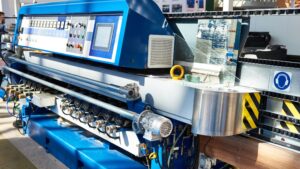
Laser tube cutting technology has come a long way in enhancing productivity across multiple industries. Not only is it a precise cutting solution, but it’s also versatile in handling a plethora of materials. Each of these materials, boasting its unique properties, lends itself to various applications, making laser cutting an invaluable process in modern fabrication.
Stainless Steel
Stainless steel stands as one of the most commonly used materials in various industries, primarily because of its resilience. Its innate resistance to corrosion, rust, and staining ensures longevity, making it an ideal choice for projects that demand durability.
- Austenitic: Non-magnetic and known for its formability and ductility.
- Ferritic: Magnetic stainless steel that has a high chromium, low carbon composition.
- Duplex: Combines the best of both austenitic and ferritic, offering increased strength.
- Martensitic: Magnetic with a high carbon content, often used for cutting tools.
Aluminum
Aluminum’s reputation in the world of manufacturing and construction can’t be understated. Its lightweight nature combined with substantial resistance to corrosion makes it the preferred material for many industries, especially where weight and durability are primary concerns.
- Pure Aluminum: Offers excellent corrosion resistance and is often used for its electrical conductivity.
- Aluminum Alloys: Enhanced strength and hardness, commonly used in aerospace and automotive applications.
Titanium
Titanium’s prominence in high-end applications, particularly in aerospace and medical industries, is undeniable. Its amalgamation of strength, lightness, and resistance to corrosion makes it a sought-after material, especially for components that need to withstand extreme conditions.
- Pure Titanium: Recognized for its superior corrosion resistance.
- Titanium Alloys: Known for their increased strength and ability to withstand high temperatures.
Brass
Brass, an alloy of copper and zinc, is renowned for its golden appearance and malleability. Its capacity to resist corrosion, coupled with its acoustic properties, makes it a prime choice for musical instruments, decorative items, and several industrial applications.
Copper
Copper is a highly conductive metal, making it indispensable in electrical applications. Its notable thermal conductivity and natural ability to resist bacterial growth also lend it to uses in various industries, from plumbing to medical.
Plastics
While not a metal, plastics have carved their niche in the laser cutting realm. Certain types of plastics can be cleanly and efficiently cut using a laser, resulting in smooth edges and intricate designs. The diversity of plastics, from acrylics to polycarbonates, ensures they meet a broad spectrum of needs across industries.
What are the tube and pipe shapes and types suitable for laser cutting?
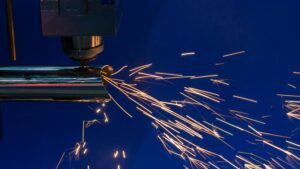
- Round Tubes: The most common shape used in laser tube cutting applications, ideal for a range of applications due to its uniform geometry.
- Square Tubes: Preferred for structures that require uniform strength along multiple axes.
- Rectangular Tubes: Often used when the strength along one axis is more critical than the other.
- Custom Shapes: With advancements in technology, custom-shaped tubes can also be effectively laser cut, ensuring flexibility in design and application.
What are the cutting tolerances for tube laser cutting?
The precision of laser tube cutting is one of its most outstanding features. Typically, cutting tolerances range from 0.1 mm to 0.3 mm. The kerf sizes, or the width of the cut, usually lie between 0.2 mm to 0.5 mm, ensuring minimal material wastage.
What is the thickest tube that can be laser cut?
For most laser tube cutting machines, they can cut tubes up to 1 inch (25.4 mm) thick. The exact thickness might vary based on the machine’s power and the material in question.
What are the advantages of using laser cutting to cut tubes?
Laser tube cutting is an innovative technology that has greatly improved the manufacturing landscape. This method is especially popular in industries that require high precision and consistent results. So, why do companies choose laser tube cutting over traditional methods?
- Precision and Accuracy: Laser tube cutting offers unparalleled precision. The technology can achieve intricate designs and minute details, which traditional methods might struggle with. The laser’s high focus allows for sharp and clear cuts every single time.
- Speed and Efficiency: With cutting speeds reaching up to 500 inches per minute on a tube, this process drastically reduces production times compared to older methods. For businesses, this can translate to more orders fulfilled in less time.
- Flexibility in Design: The laser tube cutting machine offers unmatched flexibility when it comes to design. Whether it’s round, square, or rectangular tubes, the machine can handle a variety of profiles with ease.
- Reduced Waste: Laser cutting is known for its ability to minimize waste. With its precise cutting, there’s less material wastage, which can lead to cost savings in the long run.
- Safety: The process of laser cutting is generally safer as it doesn’t require any physical contact with the material. This reduces the risk of workplace accidents.
What are the industries that utilize tube and pipe laser cutting ?
Laser tube cutting technology has been embraced by a multitude of industries due to its undeniable benefits. Let’s delve into some of the industries and their applications.
- Construction and Architecture: Laser cutting tubes find their application in creating beams, trusses, and other structural elements. The precision and consistency of the laser ensure that each piece is identical, leading to safer and more efficient buildings.
- Automotive: In the automotive industry, laser-cut tubes are used in making parts like exhaust systems, frames, and even intricate components for engines. The rapid production times and high accuracy are essential for this fast-paced industry.
- Medical Devices: Precision is paramount in the medical field. Laser cutting is employed to produce surgical instruments, equipment frames, and even parts for prosthetics.
- Furniture Manufacturing: The flexibility of the laser tube cutting machine allows furniture designers to craft unique, intricate pieces with ease. Whether it’s chair frames or ornate table legs, laser cutting offers a solution.
How to Laser Cut tubes?
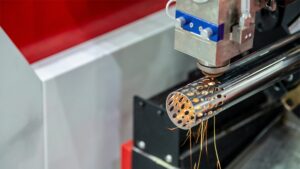
Laser cutting tubes, while intricate, follows a structured process.
- Design Creation: First and foremost, you’ll need a digital design. This design will guide the laser, ensuring the cut is just as envisioned.
- Machine Calibration: Depending on the material and design, calibrate the machine. This includes setting the correct power, speed, and frequency.
- Material Placement: Secure the tube in place, ensuring it’s aligned correctly with the laser.
- Cutting Process: Initiate the machine. The laser will then cut the tube based on the design input.
- Post-Cutting Inspection: Once the cutting is complete, inspect the tube. Ensure there are no imperfections, and the design is accurately represented.
What are the Most Important Preparations for tube laser cutting
Before diving into the laser tube cutting process, there are some preparations to ensure smooth operation:
- Material Selection: Ensure the material chosen is of good quality and suited for laser cutting.
- Machine Check: Ensure the machine is in proper working condition and has been serviced recently.
- Safety Gear: Ensure you have the necessary safety gear, like goggles and gloves.
- Design Verification: Ensure the digital design is free of errors and is optimized for laser cutting.
Safety tips when laser tube cutting
Safety should always be a priority. Here are some vital safety tips:
- Always wear protective goggles to protect against laser flashes.
- Ensure the workspace is well-ventilated to avoid inhaling harmful fumes.
- Make sure there’s an emergency stop button within reach in case of any issues.
- Never leave the machine unattended while it’s in operation.
Design tips for laser tube cutting
To ensure your designs are always on point, consider the following:
- Keep the designs as simple as possible without compromising on the aesthetic or functional aspect.
- Ensure the designs are optimized for the material you’re using.
- Always test the design on a sample material before the final cut.
- Stay updated with the latest design software and tools for optimal results.
Is laser cutting tube expensive?
The cost of laser cutting tubes largely depends on factors such as the material used, design intricacy, and labor costs in a particular region. On average, prices can range from $50 to $500 per hour, but this is a ballpark figure, and actual costs can vary.
How much does a laser tube cutter cost?
Laser tube cutters come in a variety of models and capabilities. A basic cutter can start as low as $10,000, whereas advanced machines with higher power and features can go upwards of $500,000. It’s essential to research and select a machine that fits your specific needs and budget.
How fast can a laser cutter cut tube?
A laser cutter’s speed is truly remarkable. Some advanced machines can achieve cutting speeds of up to 500 inches per minute on tubes. However, the actual speed can vary based on the material’s thickness and the intricacy of the design.
Which are the best tube laser cutting machines?
When choosing a laser tube cutting machine, several attributes contribute to its effectiveness:
- Precision and Repeatability: The machine’s ability to produce accurate cuts consistently.
- Speed and Productivity: How quickly the machine can process tubes without compromising on quality.
- Material Versatility: The machine’s capability to handle a variety of materials, from stainless steel to aluminum.
- Ease of Use: User-friendly interfaces and systems that allow operators of varying experience levels to utilize the machine efficiently.
- Maintenance and Durability: A machine’s longevity, resilience, and the frequency of required maintenance.
- Integration with Other Systems: Its ability to integrate with software and other manufacturing systems.
Given these criteria, ACCURL tube laser cutting machines emerge as a notable mention:
ACCURL Fiber Lasers: A cutting-edge solution in the field of tube laser cutting machines.
- Smart 1kW-3kW Fiber Laser Machines: These machines are designed for high-speed cutting of thin sheet tube parts. Perfect for both ferrous and non-ferrous tubes, the Genius line emphasizes productivity while minimizing operational costs.
- SmartLINE 2kW-4kW Fiber Laser Machines: Packed with state-of-the-art features, the SmartLINE offers both versatility and efficiency. Its compact design makes it suitable for a wide range of materials, including highly-reflective tubes and thick mild steel. Plus, its optional axis can handle round, square, and rectangular tubes.
- MasterLINE 6kW-15kW Fiber Laser Machines: Representing the pinnacle of ACCURL’s offerings, the MasterLINE series is compact yet complete. Configurable to evolving needs, these machines boast a compact footprint that’s adaptable to available space. Known for their proficiency with a vast range of materials, these lasers also offer optional axis for diverse tube shapes.
What are alternative technologies and processes used for cutting pipes and tubes?
Beyond laser cutting, the industry offers multiple methods for processing tubes and pipes. Each comes with its unique advantages and limitations.
Alternative processes include:
- Mechanical Cutting: Utilizes saws, shears, or rotary cutters. While efficient for certain tasks, they might not provide the precision of lasers.
- Plasma Cutting: Offers a higher cutting speed than lasers for thicker metals, but might not deliver the same degree of accuracy.
- Waterjet Cutting: A versatile method suitable for a variety of materials, it doesn’t generate heat, making it perfect for materials that might be affected by thermal processes.
Comparing these to laser tube cutting, the latter stands out in terms of speed, precision, and versatility, especially when intricate designs and tight tolerances are crucial. Lasers also require minimal setup, making them ideal for short-run jobs or projects requiring rapid changeovers.
Conclusion
Tube laser cutting, with its unmatched efficiency and precision, stands as a testament to the rapid advancements in metal fabrication technology. While alternative methods have their place, the innovations, especially those seen in brands like ACCURL, have positioned lasers as the go-to choice for many. By understanding the landscape and the technologies available, businesses can make informed decisions tailored to their specific needs.
FAQs
1. How accurate is laser tube cutting?
Laser tube cutting is known for its exceptional accuracy. With advancements in technology, today’s machines can achieve tolerances as tight as +/- 0.005 inches, making it ideal for intricate designs and high-precision applications.
2. Does CO2 or fiber laser cut tube better?
Both CO2 and fiber lasers have their merits. CO2 lasers have been around longer and are versatile, but they require more energy and have a more complex path, leading to potential power loss. Fiber lasers, on the other hand, are more efficient, maintenance-free, and have superior wall plug efficiency. They excel in cutting reflective materials and offer speed advantages over CO2 lasers for certain metal thicknesses. Generally, fiber lasers are emerging as the preferred choice for tube cutting due to their numerous benefits.


